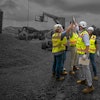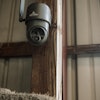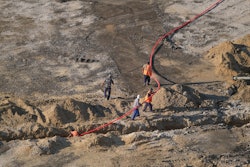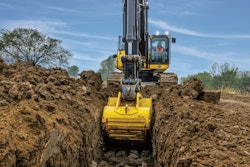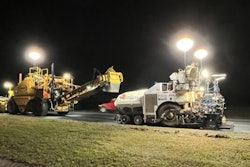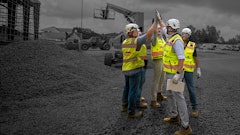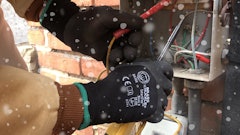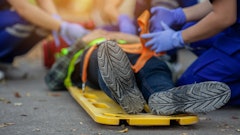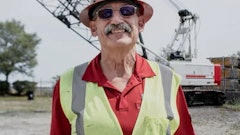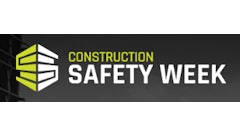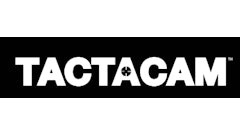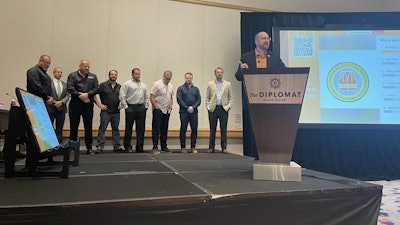
Not long ago, I was stopped at a red light, in a school zone, watching children cross the road. The crossing guards were very diligent in their whistle blowing, walking to the middle of the intersection to ensure those children crossed the road carefully, signing them across and focusing on the surrounding traffic. I imagined these same children 10-15 years later working in one of our work zones. There will be no flashing lights on signage, vehicles will not nearly come to a screeching halt, and drivers will not be reverent and respectful of human life within feet, sometimes inches, of their vehicles.
Where are their crossing guards? At what age does human life become less valuable? We innately recognize the need to protect children, and we should be reminded that the workers in our work zones are the adult versions of those children: someone’s spouse or partner, some family’s provider, and some mom and dad’s child. People in work zones need proverbial crossing guards. Who is actively making sure they are protected so they can go home to their families’ every night? They need advocates. They need us.
The Importance of Work Zone Safety
The importance of safeguarding our workers and those passing through our work zones cannot be overstated. Around the country, measures are slowly being taken to increase safety. Changing driver behavior is important and with the technology available today, this can be done. That man or woman you pass in the workzone was once that little boy or girl walking to school with lights, officers, and people in place to alert the driving public and to protect them.
Let’s keep protecting them. The commitment to workzone safety transcends regulatory compliance—it embodies our dedication to valuing human life and ensuring that every worker returns home safely. The U.S. Department of Transportation’s Fatality Analysis Reporting System (FARS) reported in their work zones in 2022: 96,000 work zones crashes, 37,000 work zone injuries, and 891 total work zone fatalities. While 2022 saw a reduction from an all-time high of 956 total fatalities the prior year, these numbers are more than data – they are lives and a call to action.
The SWIFTT Challenge: A Forward-Thinking Initiative
As the President of the Asphalt Contractors Association of Florida (ACAF), I’m deeply invested in advocating for workzone safety measures. I’m proud to represent the state of Florida and appreciative of the work being done by the Florida Department of Transportation (FDOT) to protect workers and the traveling public. Their “Target Zero” initiative focuses on reducing the number of transportation-related serious injuries and deaths across Florida to zero.
In response to protecting both workers and the traveling public, ACAF worked with the FDOT to launch the SWIFTT (Safety Workzone Innovations for Today and Tomorrow) Challenge (www.SWIFTTChallenge.com) in June, 2024 one day before the Asphalt Contractors Association of Florida’s annual convention. This FDOT developed idea was established as a competition for companies to present their work zone safety products and innovations to a group of industry and FDOT judges. The highest ranked presentation was given the chance for their idea to be developed with FDOT.
The call for presentations produced many submittals which were vetted and pared down to a short-list. The short-list of vendors provided product presentations and discussed cutting-edge technology and practical solutions. Vendors appreciated the opportunity to share their safety technology with the Department and with industry. Some vendors felt their technology and products could work well together and as a result of the Challenge, are now working together to capitalize on synergies between products to develop even more robust product offerings.
The SWIFTT Challenge represented a significant step forward in sharing technology advancements and practical solutions to enhance work zone safety and proved to be a stepping-off point for ideation of future work zone enhancement opportunities between the combined efforts of the asphalt industry and the FDOT with the perpetual goal of continued safety improvement in the work zone for workers and the traveling public.
 A photo from the SWIFTT event. The FDOT secretary is at the podium with the participants in the past (except Dan Hurtado, FDOT, second from left).ACAF
A photo from the SWIFTT event. The FDOT secretary is at the podium with the participants in the past (except Dan Hurtado, FDOT, second from left).ACAF
A Shared Responsibility and a Path Forward
As I speak to my peers around the country, there are many variations of work zone safety that are transcending. Many companies have implemented safety requirements that are making a difference (note decrease in total fatalities nationwide mentioned previously). Embracing and implementing the latest technological advancements such as smart traffic management systems continue to reduce the risk of accidents. Increasing public awareness and promoting change in driver behavior is also playing a role in reducing risk.
Some states are taking to policy changes through stronger regulations and policies that support work zone safety, including automated speed cameras in work zones with workers present. Whatever steps states are taken, those affected by work zone accidents are honored and we all actively contribute to a safer environment for those working in and traveling through the work zone. As we continue to strive for greater improvement in safety in work zones, let’s move forward with the same dedication that protects our children, and apply it to safeguarding our workers, ensuring that every person in a work zone is valued, protected, and safe.

